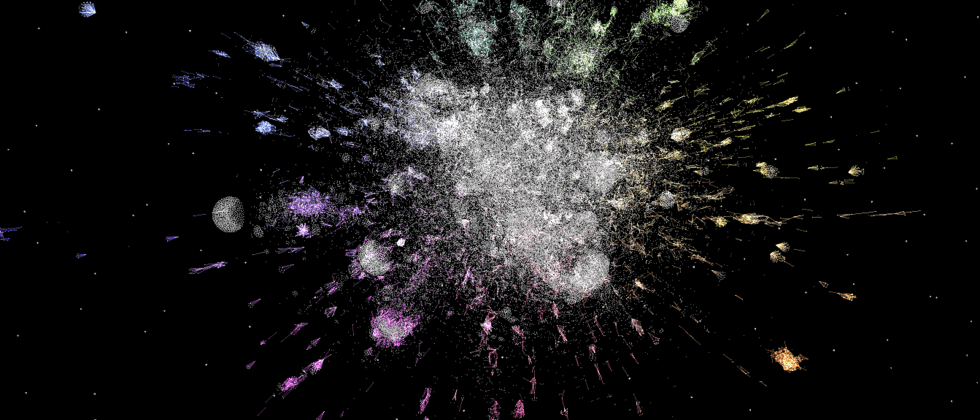background
This article is included in the "Data Visualization and Graphics" column
Previously introduced texture-related theories and simple use of If you need it, you can refer to above for multi-texture practice based on the above (more to help small partners in the group get out of the hole in advance!!!!)
Outline of this article
- Multi-texture rendering realization ideas
- Multi-texture rendering coding (several scenarios)
1. Ideas for implementing multi-texture rendering
Multi-texture rendering refers more to the relationship of gl_FragColor taking mixed texture texture2D * texture2D. The original intention of this article is to help the friends in the group's advanced bumpy road~ The need for multiple vertex (texture) rendering and overlapping coordinates will be mentioned.
- Define vertexArray (2point in the example in this article)
- Define textureArray
- Create a buffer (note the common buffer of multiple render nodes here)
- Register the shader step by step. Bind data and render.
Multi-texture rendering coding (several scenarios)
The first gl_FragColor takes a mixed texture texture2D * texture2D
The shader part is not difficult...
// vertex
attribute vec2 a_position; //坐标
attribute vec2 a_texCoord; //纹理
uniform vec2 u_resolution;
varying vec2 v_texCoord;
void main() {
// 坐标转换像素->1.0,0.0...
vec2 zeroToOne = a_position / u_resolution;
vec2 zeroToTwo = zeroToOne * 2.0;
vec2 clipSpace = zeroToTwo - 1.0;
gl_Position = vec4(clipSpace * vec2(1, -1), 0, 1);
// 纹理 给fragment使用
v_texCoord = a_texCoord;
}
// fragment
uniform sampler2D u_image0; // 纹理
uniform sampler2D u_image1;
// 来自vertex shader
varying vec2 v_texCoord;
void main() {
vec4 color0 = texture2D(u_image0, v_texCoord);
vec4 color1 = texture2D(u_image1, v_texCoord);
gl_FragColor = color0 * color1; // 可以理解为混合纹理
}
JavaScript is also very simple to create node coordinates/texture/shader&data connection/rendering!
// 此处示意代码 完整代码上传github
var texcoordBuffer = gl.createBuffer(); //纹理
gl.bindBuffer(gl.ARRAY_BUFFER, texcoordBuffer);
// bufferData
...
for(...images length){
// 循环遍历
gl.bindTexture(gl.TEXTURE_2D, texture);
}
var positionBuffer = gl.createBuffer(); //节点坐标 此处绘制TRIANGLES 三角形
gl.bindBuffer(gl.ARRAY_BUFFER, positionBuffer);
// bufferData
// 缓冲区分配给attribute变量
gl.vertexAttribPointer(
texcoordLocation, size, type, normalize, stride, offset);
gl.vertexAttribPointer(
positionLocation, size, type, normalize, stride, offset);
// 开启attribute变量
gl.enableVertexAttribArray(positionLocation);
gl.enableVertexAttribArray(texcoordLocation);
// 纹理!!!!激活纹理单元
gl.activeTexture(gl.TEXTURE0);
//给定的纹理绑定到目标(vertex)
gl.bindTexture(gl.TEXTURE_2D, textures[0]);
// 绘制!!! 大功告成
gl.drawArrays(gl.TRIANGLES, 0, 6);
The second type of multiple node textures (in fact, the coordinates overlap the latter to cover the former...)
There is no difficulty in the shader part (no changes)...
// vertex
attribute vec2 a_position;
attribute vec2 a_texCoord;
attribute lowp float textureIndex;
uniform vec2 u_resolution;
varying vec2 v_texCoord;
varying lowp float indexPicker;
void main() {
vec2 zeroToOne = a_position / u_resolution;
vec2 zeroToTwo = zeroToOne * 2.0;
vec2 clipSpace = zeroToTwo - 1.0;
gl_Position = vec4(clipSpace * vec2(1, -1), 0, 1);
v_texCoord = a_texCoord;
indexPicker = textureIndex; // 控制fragment shader选哪一个纹理
}
// fragment
precision mediump float;
// 纹理
uniform sampler2D u_image[2];
// the texCoords passed in from the vertex shader.
varying vec2 v_texCoord;
varying lowp float indexPicker;
void main() {
if (indexPicker < 0.5) {
gl_FragColor = texture2D(u_image[0], v_texCoord);
} else {
gl_FragColor = texture2D(u_image[1], v_texCoord);
}
}
JavaScript is also very simple to create node coordinates/texture/shader&data connection/rendering!
// 此处示意代码 完整代码上传github
var texcoordBuffer = gl.createBuffer(); //纹理
gl.bindBuffer(gl.ARRAY_BUFFER, texcoordBuffer);
// bufferData
...
for(...images length){
// 循环遍历
gl.bindTexture(gl.TEXTURE_2D, texture);
}
// 注意vertex!!!!! 此处与上文不同
var positionBuffer = gl.createBuffer(); //节点坐标 此处绘制TRIANGLES 三角形
gl.bindBuffer(gl.ARRAY_BUFFER, positionBuffer);
// bufferData
// 缓冲区分配给attribute变量
gl.vertexAttribPointer(
texcoordLocation, size, type, normalize, stride, offset);
gl.vertexAttribPointer(
positionLocation, size, type, normalize, stride, offset);
// 开启attribute变量
gl.enableVertexAttribArray(positionLocation);
gl.enableVertexAttribArray(texcoordLocation);
// 纹理!!!!激活纹理单元
gl.activeTexture(gl.TEXTURE0);
//给定的纹理绑定到目标(vertex)
gl.bindTexture(gl.TEXTURE_2D, textures[0]);
// 绘制!!! 大功告成
gl.drawArrays(gl.TRIANGLES, 0, vertextArray.length/2); // 绘制多个(三角形组合)正方形
!!!! Pay attention to the comments in the code (solve your doubts)
1.
webgl-utils.jswebgl related function packaging tool libraryComplete code example [please click the git repository to view the code example]
texture.html
What you may need to know about 2D rendering
- Texture cache
- Texture compression
- 2D/2D texture optimization
- Rendering optimization...
finally
Finally, I strongly hope that everyone learns relevant theoretical knowledge; theory may be used in very few places in daily life, but it can determine how far you go. (Some people ask what to do, practice hard) I feel like I'm good at writing speed, hahaha... I will continue to update recently (because I am developing my own rendering engine. Alas, it's hard to say... Sorry)




**粗体** _斜体_ [链接](http://example.com) `代码` - 列表 > 引用。你还可以使用@来通知其他用户。